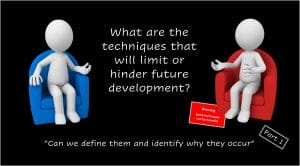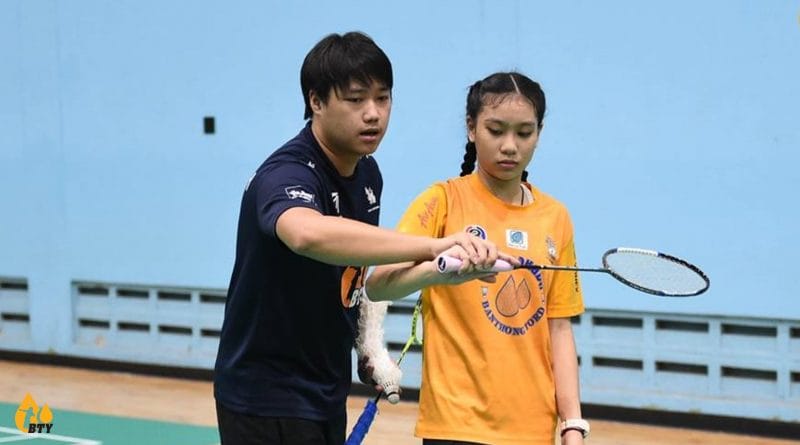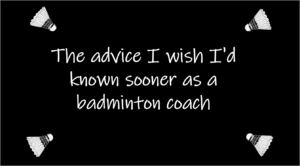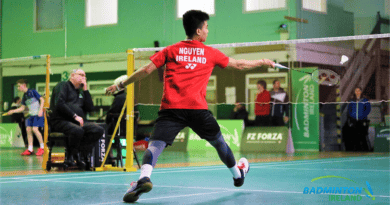20. Be careful changing techniques
Should I intervene and change the technique?
“Be careful”, I heard the voice inside me say
“But it’s not correct (perfect), so it must be changed”, I heard my other voice say
It was a tough lesson to learn and it took a while!
There is far more to changing a badminton technique than just offering instruction in the hope that things will improve
The player wanted to the change but I wish someone had told me of the challenges I was going to face when changing a badminton technique. It wasn’t as simple as I thought.
All the different skills that I’d need, all the different voices I’d hear and all the mistakes I’d make. Many of the mistakes came from good intentions, but many didn’t help the player or me (the coach).
I initially thought that all that was needed was to address the aspects I could see directly in front of me. I had no idea of all the variables and considerations that need to be addressed.
Eventually, I’ve realised that there is no ‘one way’ to change a technique and there certainly isn’t such a thing as a ‘perfect technique’!
 However, there are certain techniques that if allowed to develop will limit future development or even cause injury.
However, there are certain techniques that if allowed to develop will limit future development or even cause injury.
After reading this post why not click on this image and see if you agree with my thoughts on ‘Error Prevention’ rather than ‘Error Correction’.
Will you agree with my proposals?
I needed more expertise & awareness of the ‘how to’ skills, rather than just pushing technical information
– – – – – – – – – – – – – – –
Types of changes
Be sensitive towards
My ongoing challenge
Questions for you
– – – – – – – – – – – – – – –
Types of changes
No one told me that there are different high-level strategies that a coach can use when changing a technique.
Eventually, through trial and error and by working with some great coaches, I became aware of these strategies:
Obvious – the player and coach both know and agree on the change. They monitor progress, they discuss strategies, they work openly towards a change.
Subtle – the player and coach have agreed to work on a change but it’s not always obvious to the player. Some practices seem to address one thing, but actually they are addressing another (in part).
Hidden – the coach has identified the requirement for change but has not spoken with the players and works on it without the players’ knowledge.
Each of these methods requires expertise from the coach and none are easier than another
– – – – – – – – – – – – – – –
The advice I was given or realised
After watching and working with wiser coaches, I realised that it was far more than just offering instructions when changing techniques. In fact, it was far more complicated than I ever imagined.
On reflection (after many hours of listening, watching and questioning) I realised that they were sensitive to many of the aspects below.
Plus they told me that it wasn’t just the technical information. However, some did struggle to articulate exactly what skills they used and how many decisions they made.
Often I was told, “you need to think about what the implications could be when changing a badminton technique”
I was then told – “Do this before and during the interactions”.
The best coaches I knew could consider all these
I was shocked at the amount of consideration
Be sensitive towards ..
Psychological impact: players may respond differently and each individual may have a range of thoughts and emotions during any changes.
I realised that I had to stop treating everyone the same.
Stage of the season: some changes work best in the off-season, others may need immediate action.
I had to consider the priority and combine the tournament plan into my thoughts.
Stages of refinement: Not all changes take the same length of time and players have different thoughts on how quickly the changes should take.
I had to plan and prepare for each stage of change, then be super flexible, and understand the players’ expectations.
Working quietly (through practice constraints & distractions): often the best changes came when the players didn’t appreciate that we were working on a change.
I needed to quieten my words regarding what I was doing, and just do it. Why did I feel that the players needed to know everything!?
Players’ awareness of the technical content: What do they need to know, what should I say and what type of phrasing should I use?
I experimented in terms of how I described what we were doing, I tried to sound less like a coach talking to another coach.
Differences between Player & Coach expectations: Both could have different thoughts and both may only be thinking about their own without realising that they know nothing about the others. I guess that sounds obvious!
I realised that I never asked my players about what they expected during the change and what their expectations were are the end. I should have regularly checked the players’ thoughts, or at least have a conversation!
Possible injury: some changes can cause injury or at least stimulate the body to react differently than previously.
I never expected to injure someone just by making a positive technical change 🙁
Effect on competition & mindset: knowing that you are changing a technique can have a huge psychological impact on some players if they are about to play a competition.
I needed to be sensitive to the situation and integrate the plans for changes into the pre-competition mindset work.
Refinement is different from correction: I’ll leave you to think about this for yourself. I believe that refinement and correction are different and do require different coach methodologies and skills. What they are, well you can think about that!
– – – – – – – – – – – – – – –
My ongoing challenge
To carry on learning and developing strategies on when and how to effect a change.
I’ve realised that this is far more important than recognising what needs to be changed. Of course, recognition is an important factor, but knowing what to do with the information is the key.
There is far more to changing a technique than just practising something different, do you agree?
It’s my intention to write a post called “Changing a badminton technique”. Do you want to offer up some ideas or subject headings that you think need to be included?
This is your opportunity to share the knowledge that you’ve gained so that others can benefit and ultimately help players improve, or at least not suffer.
It would be great to hear your views, why not send me an email. contact@badmintonandy.com
– – – – – – – – – – – – – – –
Questions for you
- How often do you ‘sell’ the idea of changing techniques to performers, or do you just get on with the change?
- What aspects are you sensitive to when deciding how to go about any changes?
- Do you deliberately try to build a culture of development in young performers to ease your future work?
- How many of the 8 points above would you consider when thinking about changing a badminton technique?





